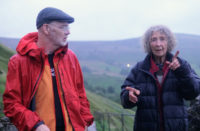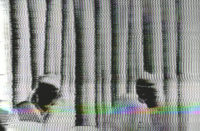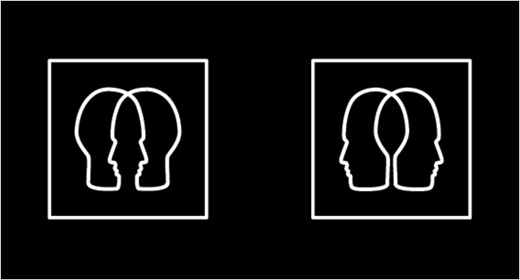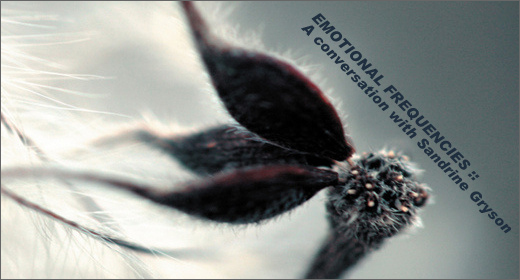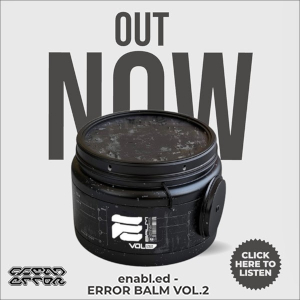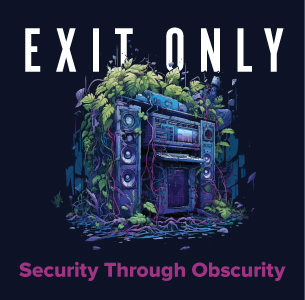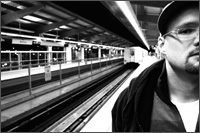
(02.17.07) ONE of n5MD‘s favourite sons, SubtractiveLAD (Stephen Hummel), squeezed in
a Q&A with Igloo in between releasing his latest album No Man’s Land and
moving house. Learn of the mysteries of emotional electronic music
composition, thrill to insights into what it is for a LAD to be
subtractive, and gasp at his barefaced denial of IDM.
Igloo :: I gather that you started out in the jazz-improv world. What
happened to make you shift genre paradigms and move into electronica?
Stephen Hummel :: It’s the improvisational aspect of jazz that got me into it and my music is
still fairly improvisational, both at the writing stage and when I perform.
I’ve just moved away from the typical instrumentations and structures of
jazz (if there are typical jazz instruments and structures these days).
It’s obvious that the perception of jazz as a genre has also changed and
I’m sure if you asked one person and then another the question “what is
jazz?”, you’d get pretty different answers. Maybe Duke Ellington had it
right when he said “It’s all music.” To be clear, the subLAD sound doesn’t
generally include large horn sections and an obvious swing over a 12-bar
progression – I still like that stuff, it’s just not what I hear when the
muse comes to visit. In my teens, my high school got a MIDI workstation
(we’re talking Atari ST here) with a Korg M1 – I instantly got fascinated
with the possibility of layering sounds that I made and being in complete
control over my vision. I would spend weekends taking the gear home
(nobody else really bothered with the stuff) and getting lost in my own
world.
Igloo :: How do you feel about the genre tag ‘IDM,’ first of all as a tag,
and secondly as applied to your music?
SH :: I think intellectualism hurts music more than it benefits it. I create
music from an emotional place and even my sound design work is directed by
an emotional response. It seems true, however, that one has to become
proficient enough with an instrument or piece of software to think less and
feel more. It’s like learning to read – it would be hard to get lost in a
novel while having to sound out every word. I don’t consider my music IDM
and I don’t think others should either. When people that don’t know me
find out I’m a musician and ask me what kind of music I make, I usually
just describe it as electronic and then they tell me how much they like
house music.
Igloo :: I read that the origin of your project’s name comes from the concept
of ‘subtractive synthesis’. How would you characterize this to someone
without much ‘techie’ knowledge? In what lies its appeal, i.e. what does it
offer that makes it distinctive and good to work with?
SH :: I think what appeals to me most about subtractive synthesis and especially
analogue subtractive synthesis is the hands-on nature of the instrument –
and the electricity (literally) that makes it feel alive to some extent.
While playing a keyboard one can also sculpt the instrument’s sound by
controlling various aspects of the sound-generating circuit as a part of
the performance (using the knobs and switches, etc). On my latest album’s
title track (“No Man’s Land”) you will hear exactly what I am describing –
the track is made up of overdubs of me playing various synthesizers (and
guitars) live and tweaking the sounds in real time while playing the notes.
I wanted to write a track that was in the moment and yet fairly epic at the
same time – like telling a long story from beginning to end in one sitting.
I actually wrote that track in one afternoon – it’s the longest track on
the album and was the quickest one to create, completely improvised on the
fly.
Igloo :: How do you go about your work (i.e. the compositional process and a
bit about the technology – though not too geeky!)? And relatedly, your
music has quite a distinctive sound with particular ‘hues’ and textures –
is there a particular way you go about getting that kind of sound?
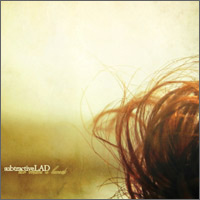
SH :: The process can change from track to track, depending on where I start with
the idea. Sometimes I start with a rhythm, other times a melodic hook but
mostly I improvise on chord structures and then map things out from there.
It’s probably the jazz background again – I love having a chord structure
as a foundation to improvise upon. In terms of the sounds and timbres I
use in my work, I try not to think it over too much and instead just play
with a patch until I feel a connection to it – same with guitar tone, I’ll
mess with things until it just feels *right*. Sometimes I’ll hear a
particular sound in someone else’s work that really excites me and I’ll
figure out a way to make it my own. I think a lot of sounds are
subconscious as well – references to the past and connected directly to
emotions. I guess my *sound* (if I do have one) is simply the sum of all
the things that I like, in a way.
Igloo :: How do you construct your beat structures – is there a specific
methodology or does it vary? Do you use ‘real’ real-time drumming like, for
example, Mike Cadoo has sometimes done in his Bitcrush stuff?
SH :: I mess with a sound until it feels right and then map it on the keyboard (I
repeat this process until I have a whole percussive ensemble across a
portion of the keyboard). This can be a slightly time-consuming ordeal
(especially with velocity layers) but once things are mapped out I just
play stuff live and find bits that I like to repeat and layer, etc. After
things are played and arranged for the most part, I will often mess with
things a little more in the micro-editing department to accent moments and
provide additional impact/tension/release, etc.
Igloo :: Would you say that your music is ‘about’ anything other than the
play of sound with itself? Does it (or do individual tracks) have any sort
of ‘message’?
SH :: I feel like my tracks take on meaning once they get started and after a few
songs are done a theme will usually emerge to set the tone for a whole
album. I don’t usually start a new piece with a message in mind – I try to
stay as open as possible to what is naturally trying to come out and I sort
of discover the message along the way. That said, I think my music is
certainly more than the play of sound – I definitely put a great emphasis
on the musical structures as well as the production values, etc.
Igloo :: I’m curious to know about the musician’s lot as regards making a
living: is it possible to make a living as a non-mainstream experimental
electronic musician without another source of income? Relatedly, I read
that you’ve also developed and marketed your own brand of devices called
‘Wavelength’. Is your involvement in software development intensive and
does it generate much money for you?
SH :: I’m sure it’s possible to make a living at just making niche-market music
if one is focused and driven enough and open to licensing options and the
like. One would also have to build a following of enough loyal fans to
rely on a certain amount of sales every year. I think it also would
require quite a consistent output of material and perhaps even frequent
touring/e-marketing one’s material. The music software development game is
a tough one – when I first started out back in 1999 the game was different
and there wasn’t really any freeware or shareware available (or crackware),
I actually made a modest living for the first year but it wasn’t long until
free suddenly seemed like the right price for software instruments. It’s a
whole lot of work for very little payoff financially, in the end I had to
tell myself that I was doing it for my own sonic arsenal – and truthfully
this became how the subLAD project was born. I’m pretty settled these days
and I’m not particularly interested in touring for long periods of time. I
enjoy playing live under the right circumstances (great room/sound, etc)
and I enjoy the energy I get back from the crowds but I primarily write
music for myself which seems enough for me. I currently subsidize my
income with a gig at a local art college, working as a career liaison to
industry for audio and film grads – which is fun and keeps me very well
networked.
Igloo :: How did you hook up with N5MD and Mike Cadoo? Did you send him a
demo or were you head-hunted?
SH :: I sent Mike a demo and then Mike and I ended up going back and forth over
email for a long while getting to know each other before any real
commitment was made. In retrospect it was definitely the right way to go –
to make sure that everything was a good fit and that we both felt
comfortable dealing with each other. Mike was definitely instrumental in
getting me to focus my sound and be truer to what I was trying to get
across, instead of making music that I thought people wanted to hear.
Igloo :: Which current artists do you particularly admire and who would you
mention from the past as having been figures that have shaped your musical
development significantly?
SH :: Artists I admire from both past and present (apart from the n5 peeps) –
Arvo Part, Brian Eno, David Sylvian, early Warp Records, Leonard Cohen,
Jimi Hendrix, Pink Floyd, Stevie Ray Vaughn, Kevin Shields, Cocteau Twins,
Vangelis (Blade Runner, not Chariots of Fire), Tangerine Dream (analogue,
not digital), early hip-hop (I used to breakdance back in the day), P-funk,
Robert Fripp, Daniel Lanois, Hammock (Mike originally turned my onto
Kenotic and it was so instantly appealing to me), Sigur Ros, Miles Davis,
Charlie Parker, Chick Corea, I also listen to a lot of classical music and
lately I’ve been getting into Wagner and Biber – I could go on and on but
these are the ones that just came to mind? I am also meeting a lot of great
artists through MySpace which I had shunned for a long time and now find
myself fairly addicted to (sadly).
Igloo :: There seemed a notable difference in sound and mood between Giving
up the Ghost and Suture, How would you compare the latest album No Man’s
Land with those two albums. And relatedly, what factors do you think are
most influential in determining the overall ‘tenor’ of specific albums?
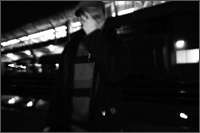
SH :: It’s so hard for me to judge these things objectively – it all seems like a
very natural progression to me because I’ve gradually developed things over
time. Although it is true that I would definitely never want to make the
same record twice – I always try to add something a little different to
keep things interesting for myself. Each album is really just a snapshot
into my subconscious during the six months or so it took me to write each
album. Regarding No Man’s Land as it compares to my other two? I would
just have to say that it is more hands-on and less massaged in ‘post-‘ – I
wanted it to have a more immediate sound and a more intimate feel. It is
less dark than Suture, perhaps more hopeful in tone. One thing I always
try to achieve is a real flow to every album – to have a journey from
beginning to end. I take great pains with the sequencing of each of my
album’s tracks.
Igloo :: Is there a ‘concept’ underlying No Man’s Land or is it just a
collection of tracks linked only by virtue of your authorship?
SH :: I was intrigued by the notion of a no man’s land – the idea of a place of
neutrality that has elements of extreme danger and refuge all rolled into
one. It seemed a good metaphor for human relationships and some of the
things I was going through in my own life at the time. The rest I will
leave for the listener to determine.
Igloo :: Is there anything that your personal input and context
(environmental, geographical, whatever…) has brought to the music that
you see as making it distinctive?
SH :: I’m certain it all has an impact in some way – although I think I tend to
insulate myself from the world somewhat when I get deep into a new project.
I don’t feel like I have a particularly *Vancouver* kind of sound, if this
is what you are asking. I think I would write similar music wherever I was
at the time – again? hard to say until I’ve lived in a very different place
for any length of time.
End.
For more information about SubtractiveLAD, visit his website here.
No Man’s Land is out now on n5MD.







